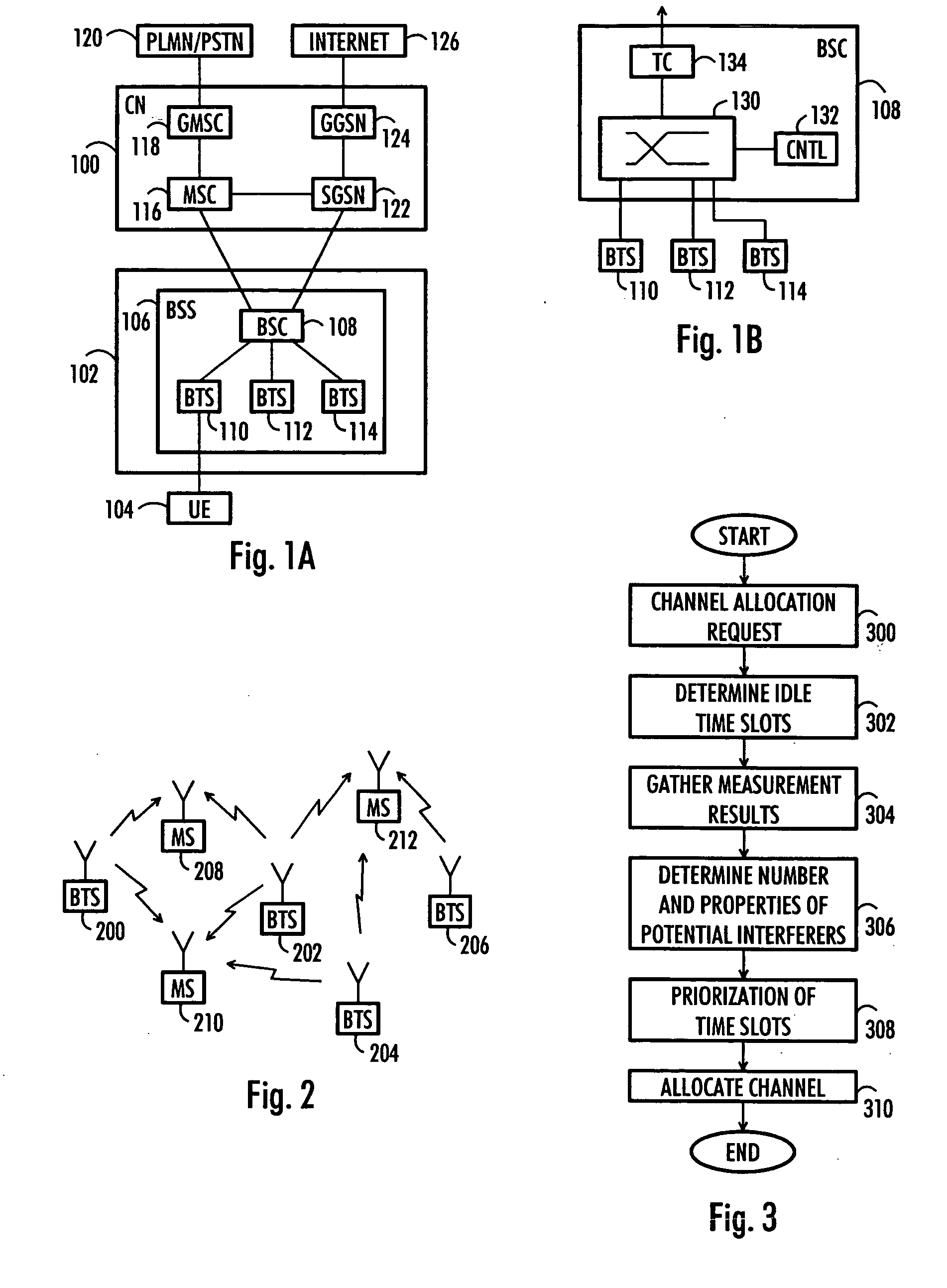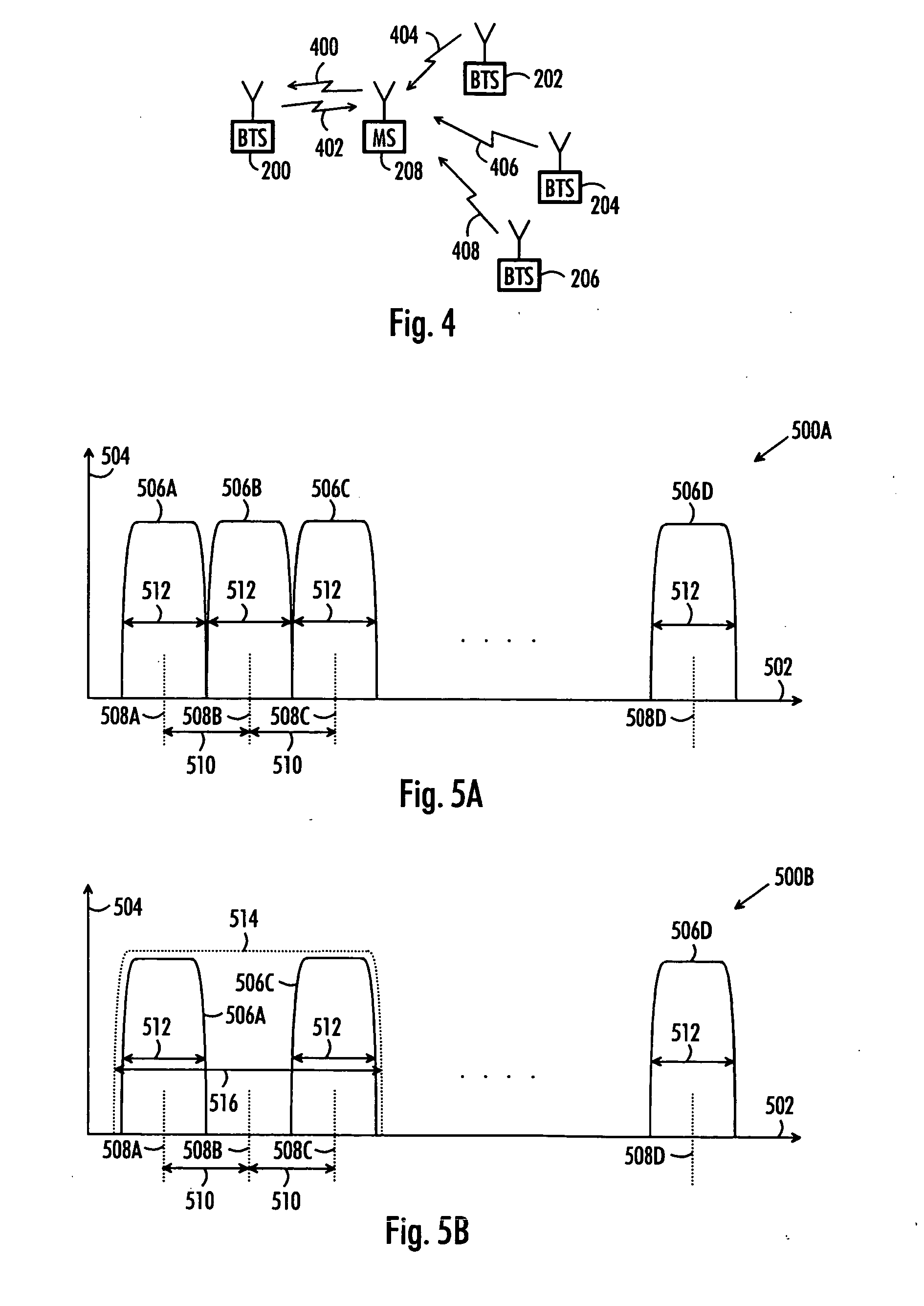Radio channel allocation and link adaption in cellular telecommunication system
- Summary
- Abstract
- Description
- Claims
- Application Information
AI Technical Summary
Benefits of technology
Problems solved by technology
Method used
Image
Examples
Embodiment Construction
[0033] The present invention is applicable in various telecommunication systems, in which terminals are provided with different radio path properties. In the embodiments of the invention, the users are typically separated from each other in time domain and several frequency carriers are in use. Typical examples of a system in which the invention can be applied are cellular telecommunication systems such as GSM and GSM / EDGE based systems and evolutions of third generation systems such as 3.9G, also called LTE (Long Term Evolution) or EUTRAN (Enhanced UMTS Terrestrial Radio Access Network).
[0034] Let us take a closer look at FIG. 1A, which illustrates an example of the structure of a cellular telecommunication system. FIG. 1A is a simplified block diagram describing the most important cellular telecommunication system parts at network element level and the interfaces between them. The structure and operation of the network elements are not described in detail, since they are commonly...
PUM
 Login to View More
Login to View More Abstract
Description
Claims
Application Information
 Login to View More
Login to View More - R&D
- Intellectual Property
- Life Sciences
- Materials
- Tech Scout
- Unparalleled Data Quality
- Higher Quality Content
- 60% Fewer Hallucinations
Browse by: Latest US Patents, China's latest patents, Technical Efficacy Thesaurus, Application Domain, Technology Topic, Popular Technical Reports.
© 2025 PatSnap. All rights reserved.Legal|Privacy policy|Modern Slavery Act Transparency Statement|Sitemap|About US| Contact US: help@patsnap.com



